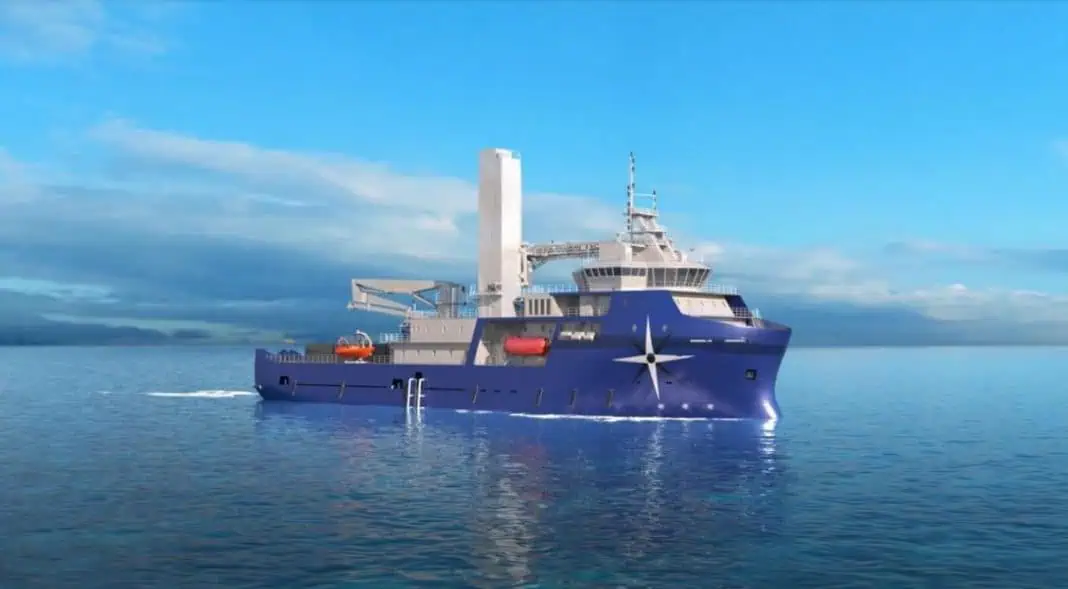Marco Polo Marine and together with its subsidiaries, a regional integrated marine logistics company actively involved in the offshore wind sector, together with Amogy Inc., a pioneer of emission-free, energy-dense ammonia power solutions, entered into a Memorandum of Understanding (MoU). Under the terms of their MOU, Amogy’s proprietary ammonia-to-power system would also be installed on Marco Polo Marine’s existing or newly built wind vessels, allowing them to operate with zero emissions.
The collaboration dovetails with Marco Polo Marine’s efforts to decarbonise the shipping sector and reduce the carbon footprint of offshore wind farms through the adoption of more sustainable and green practices. The partnership will also allow Amogy to fine-tune its ammonia-to-power solution in order to more effectively support the specific types of wind vessels (including, but not limited to, CSOVs and SOVs).
It is thus an excellent opportunity for both parties to work together to ensure optimal performance, best practices, and successful execution, and to promote sustainability and carbon neutrality initiatives across the maritime and offshore wind industries.
According to a report by the US Department of Energy, global offshore wind energy is a rapidly growing industry and is expected to increase by about five times in size by 2030. As at end- 2022, Asia is expected to have overtaken Europe as the world’s largest regional offshore wind market by cumulative installations1. The region’s offshore wind capacity is forecast to expand at an annual average rate of 15.3% from 27GW as at end-2021 to 109GW in 20312. Wind vessels like CSOVs and SOVs etc. are important support vessels in the offshore wind industry, and the adoption of ammonia power would see a significant decrease in carbon dioxide and other greenhouse gas emissions from such vessels.
“We welcome the opportunity to collaborate with Amogy and combine our environmentally friendly and innovative technologies. We think that Amogy’s ability to convert ammonia to gaseous hydrogen in our wind vessels is a step in the right direction that brings us closer to our long-term goal of decarbonising the maritime industry by reducing greenhouse gas emissions. Additionally, it will help speed up the global transition towards clean energy sources,” said Sean Lee, CEO of Marco Polo Marine.
“We’re delighted to work with a respected and innovative maritime operator that shares our bold vision for a greener and more sustainable future,” said Seonghoon Woo, CEO of Amogy. “The Asia-Pacific region’s commitment to clean fuels makes it important that we have an impact here, and we hope that our partnership with Marco Polo Marine can serve as a powerful example for other maritime operators.”
The Maritime & Port Authority of Singapore (MPA) and the Singapore Energy Market Authority (EMA) recently launched an Expression of Interest (EOI) process to build, own and operate low or zero-carbon power generation and bunkering projects on Jurong Island, noting that they saw ammonia power as a “promising pathway” to decarbonisation.
Recently, Marco Polo Marine has stepped up its push into the offshore wind industry, following its successful acquisition of PKR Offshore, an established Taiwan-based wind vessel operator, in May 2022. The Group also commissioned the development of a new state-of-the- art CSOV at their Batam shipyard in September 2022 to boost service offerings in support of the offshore windfarm sector. Leveraging on its offshore wind track record in Taiwan, the Group has been supporting the development of offshore wind farms in Japan, South Korea and the wider Asia-Pacific region. It continues to actively identify suitable partners in new markets to expand its reach.
The MoU announcement comes after the news of Amogy’s recent $139 million B-1 raise. The round will enable Amogy to continue its organisational development to support commercialisation, begin manufacturing its innovative ammonia-to-power technology, and bring its first product to the market in 2024. This also comes after Amogy announced it is building a zero-emission ammonia-powered vessel with the intention of sailing the vessel in late 2023. Ammonia is predicted to become the leading fuel source for the world’s giant cargo ships by 2050.












